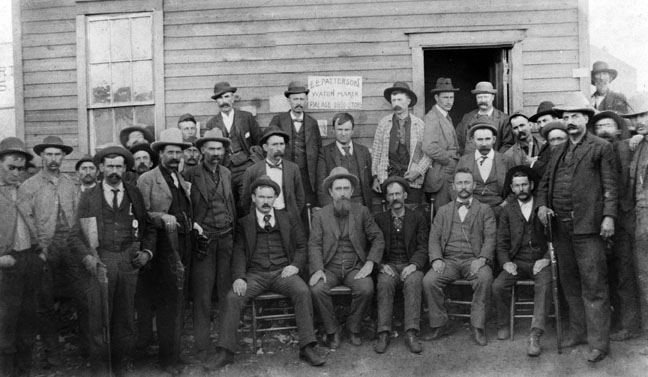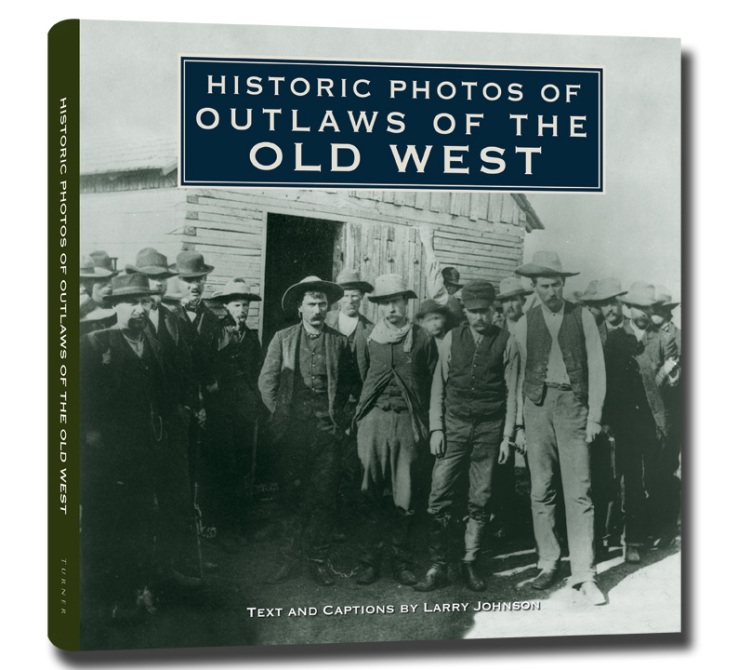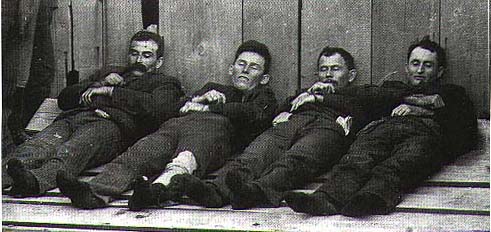
In 200 black and white archival photos with accompanying captions by historian Mike Cox, Historic Photos of the Old West winds its way through almost two centuries of American history, tracing the exploration of the West from its earliest pathfinders like Lewis and Clark, through later generations who mythologized the practitioners of Manifest Destiny. Along the way, we’re treated to photos of lawmen and settlers, civilizers and politicians, along with plenty of roustabouts, rustlers, and rascals (admittedly, some of these “heroes” had no problem slipping from the former category to the latter and back). There are all the famous names you’d expect to see in here–Wild Bill Hickok, Calamity Jane, Pat Garrett, the Earp brothers, just to name a few–but its photos like this one, below, of a pioneer family in Nebraska that signal the less sensational (and perhaps more human) side of the Western migration.

Of course, those settlers needed land when they arrived out West, as well as protection from the Indians who had been there first (not to mention each other). The picture below shows the bureaucrats of the U.S. Land Office who doled out Indian land to white people, along with the armed U.S. marshals who enforced these actions. Are they heroes?

The following picture depicts a company of Texas Rangers, posing with their Winchesters in South Texas in the mid 1880s. Some tough-looking hombres.

Historic Photos of Heroes of the Old West, available now from Turner Publishing, makes a nice companion piece to Historic Photos of Outlaws of the Old West.

 The romantic myth of the Western outlaw still remains central to American identity. If we are part Puritan, we also like to think of ourselves as the kind of anti-social cowboys who go out and manifest our own destiny. It’s no wonder that we have a tradition of valorizing outlaws like Billy the Kid, the Dalton gang, and Frank and Jesse James, transfiguring their bullying and theft into a kind of partisan resistance to hegemony. These men did not steal from the rich to give to the poor, yet we like to pretend that they were Robin Hoods. Turner Publishing’s new collection Historic Photos of Outlaws of the Old West presents 200 archival images of infamous (and not so famous) robbers, road agents, and rascals in the kind of gruesome detail that outlines just how awful these people really were. The Old West isn’t so romantic after all.
The romantic myth of the Western outlaw still remains central to American identity. If we are part Puritan, we also like to think of ourselves as the kind of anti-social cowboys who go out and manifest our own destiny. It’s no wonder that we have a tradition of valorizing outlaws like Billy the Kid, the Dalton gang, and Frank and Jesse James, transfiguring their bullying and theft into a kind of partisan resistance to hegemony. These men did not steal from the rich to give to the poor, yet we like to pretend that they were Robin Hoods. Turner Publishing’s new collection Historic Photos of Outlaws of the Old West presents 200 archival images of infamous (and not so famous) robbers, road agents, and rascals in the kind of gruesome detail that outlines just how awful these people really were. The Old West isn’t so romantic after all.


